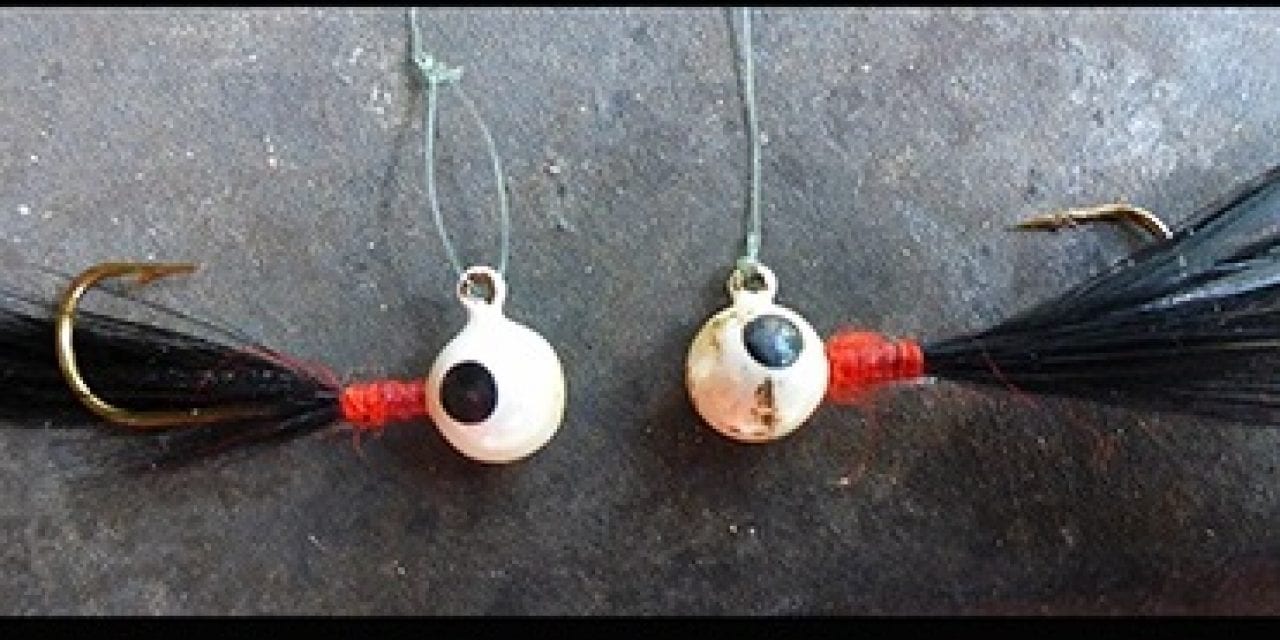
Anglers who present jigs vertically commonly embrace one of two opposite philosophies for tying on jigs. But each method has definite merit.
Some anglers prefer a knot that can be cinched tight. That allows the knot to be placed on the line-tie for the purpose of controlling the way the jig hangs in the water. For a jig with a 90-degree line tie, placing the knot right on top and getting it good and snug causes the jig to suspend horizontally to imitate the natural posture of a baitfish. These anglers check to jigs to see how they hang and adjust the knot position as needed, and they re-check the positioning regularly to make certain the knot has not slipped.
Other jig fishermen who likewise use vertical presentations take the opposite end of the spectrum by tying on every jig with a loop knot. These anglers want to free the action of the jig, allowing it to swing uninhibited with every movement of the rod tip.

As different as these ideas are, neither is wrong. In fact, each can have applications for different situations. If you’re fishing a jig very slowly, with significant pauses, cinching it tight so it rests with a horizontal posture probably makes the most sense. However, if fish are active and you plan to keep the lure moving most of the time, using a loop knot might be a better option.
Truly, the biggest mistake would be to fail to consider the impact of the knot you choose and the position of the knot.
Fishing Tip Articles:
- Trout Fishing Tips From Minnesota
- 10 Freshwater Fishing Tips By JetDock Systems
- Winter Fishing Tips and Tactics
- Winter Fishing Tips and Tricks – From The Georgia DNR
The post Fishing Tip – Snug or Swinging appeared first on OutDoors Unlimited Media and Magazine.
















